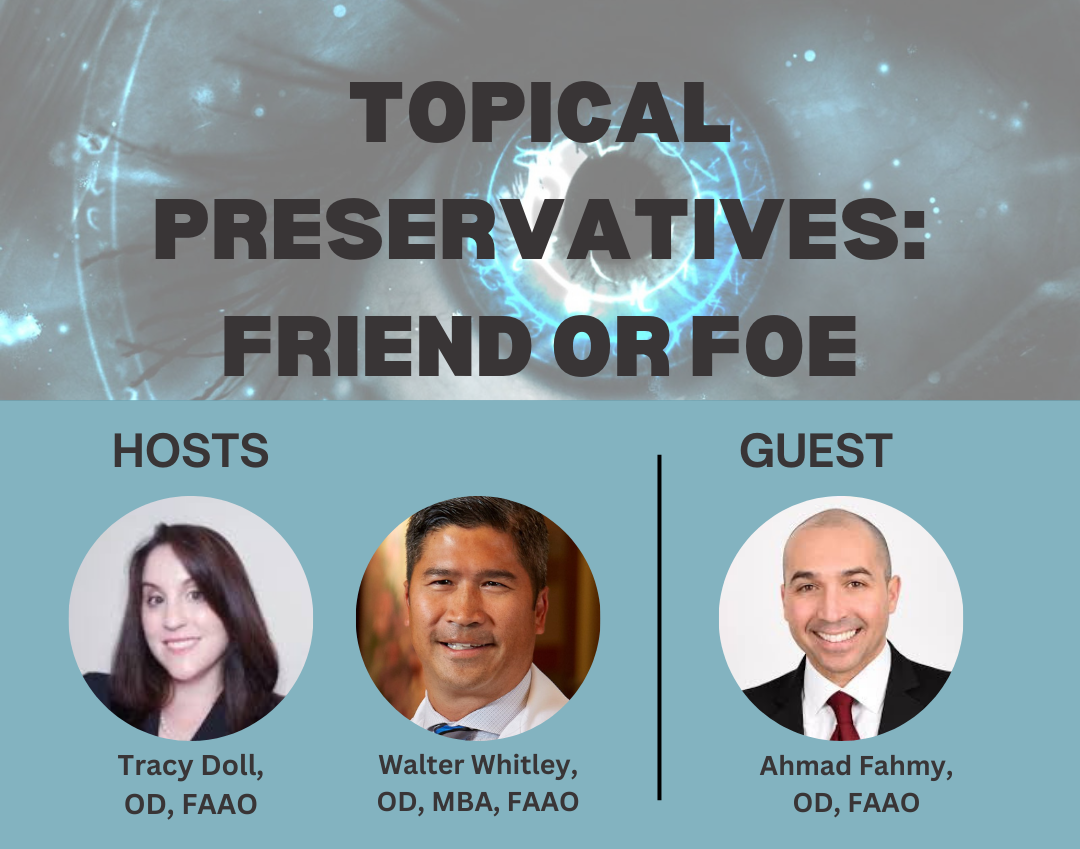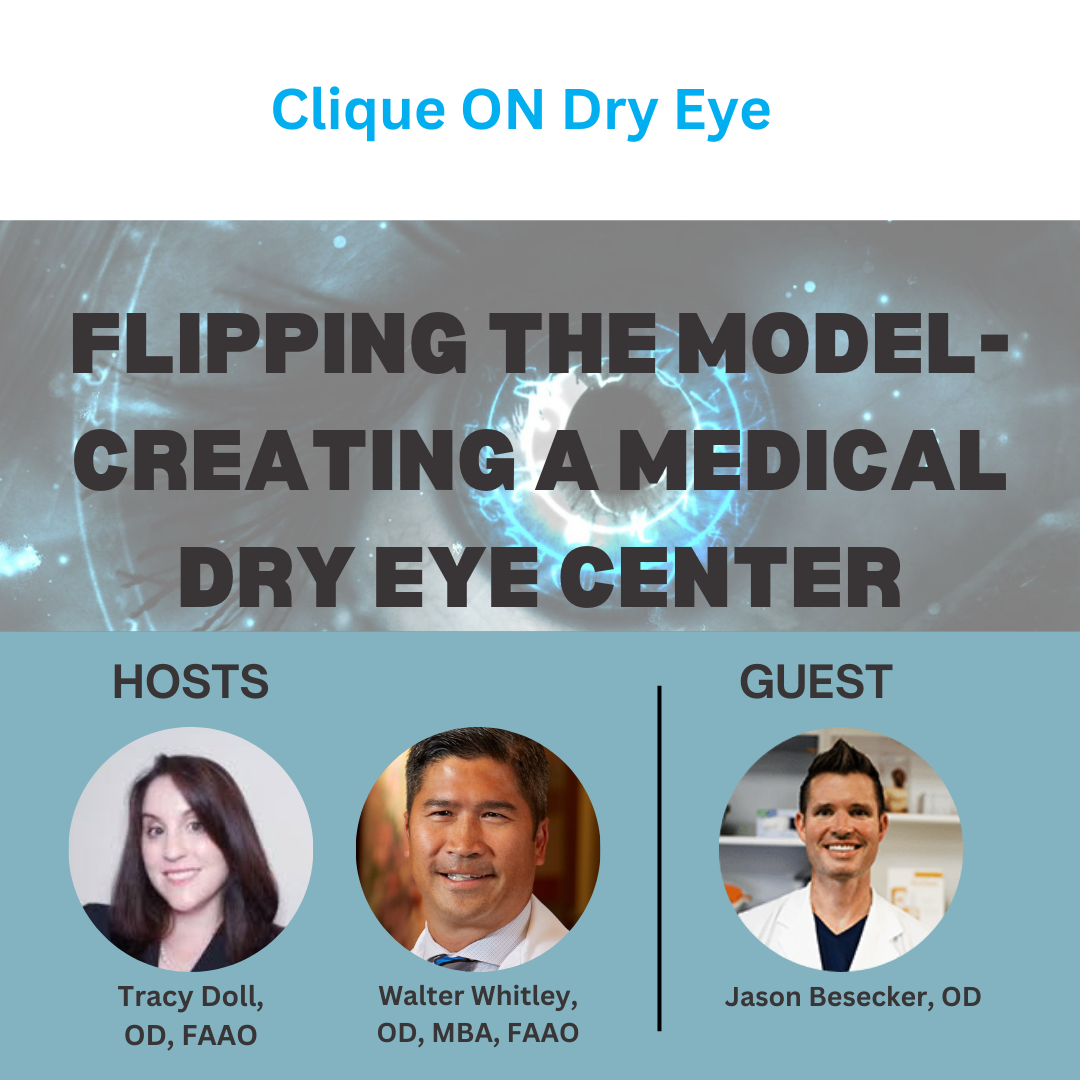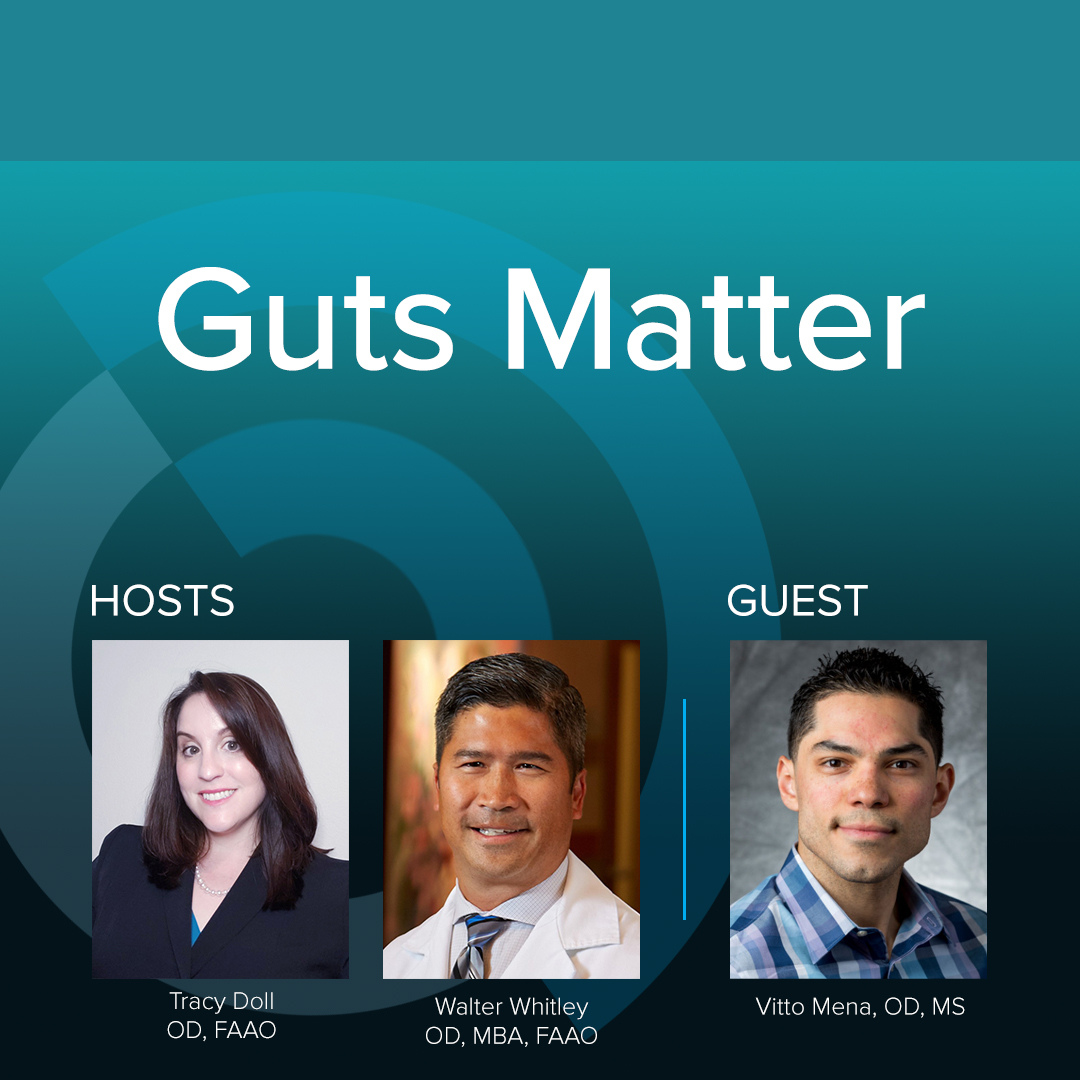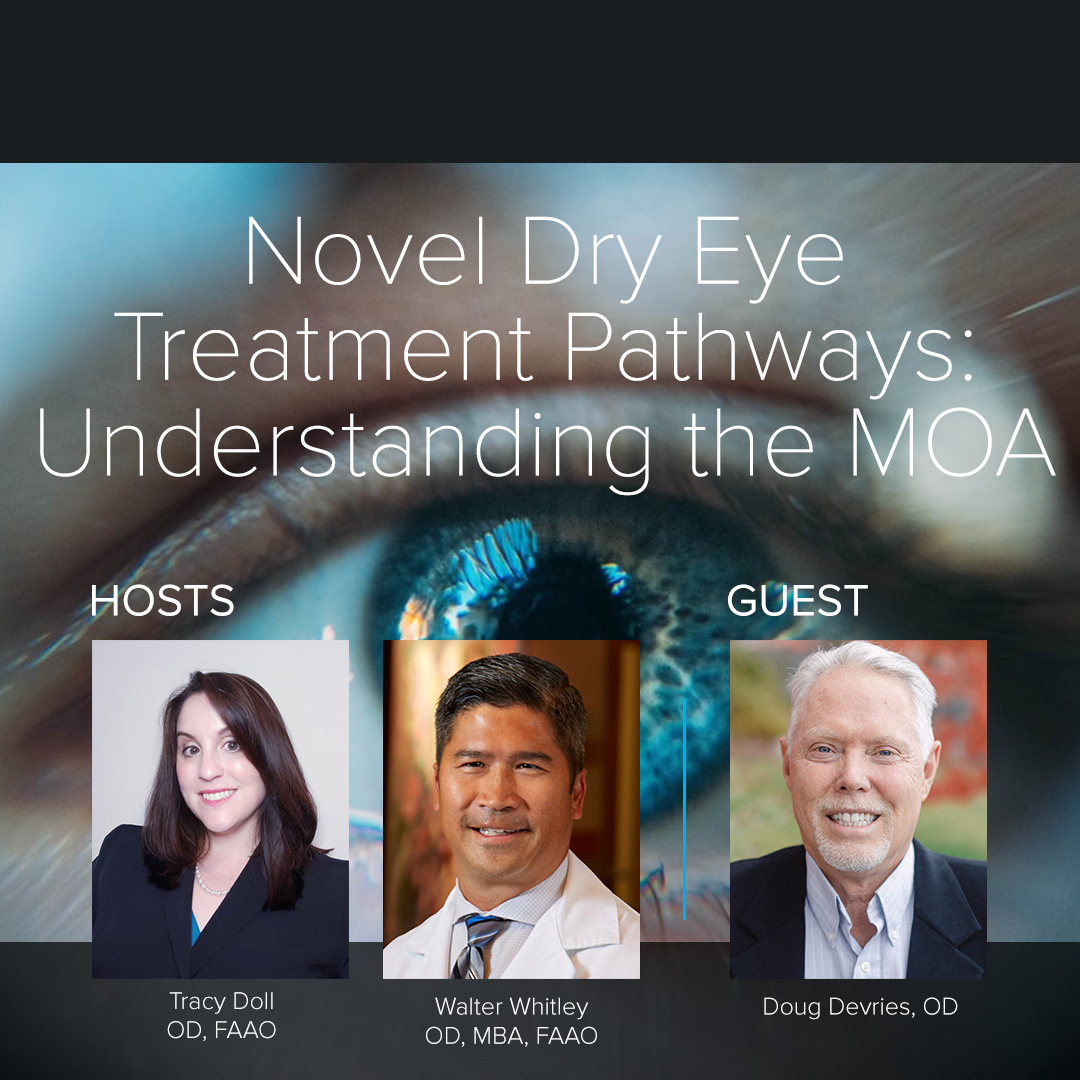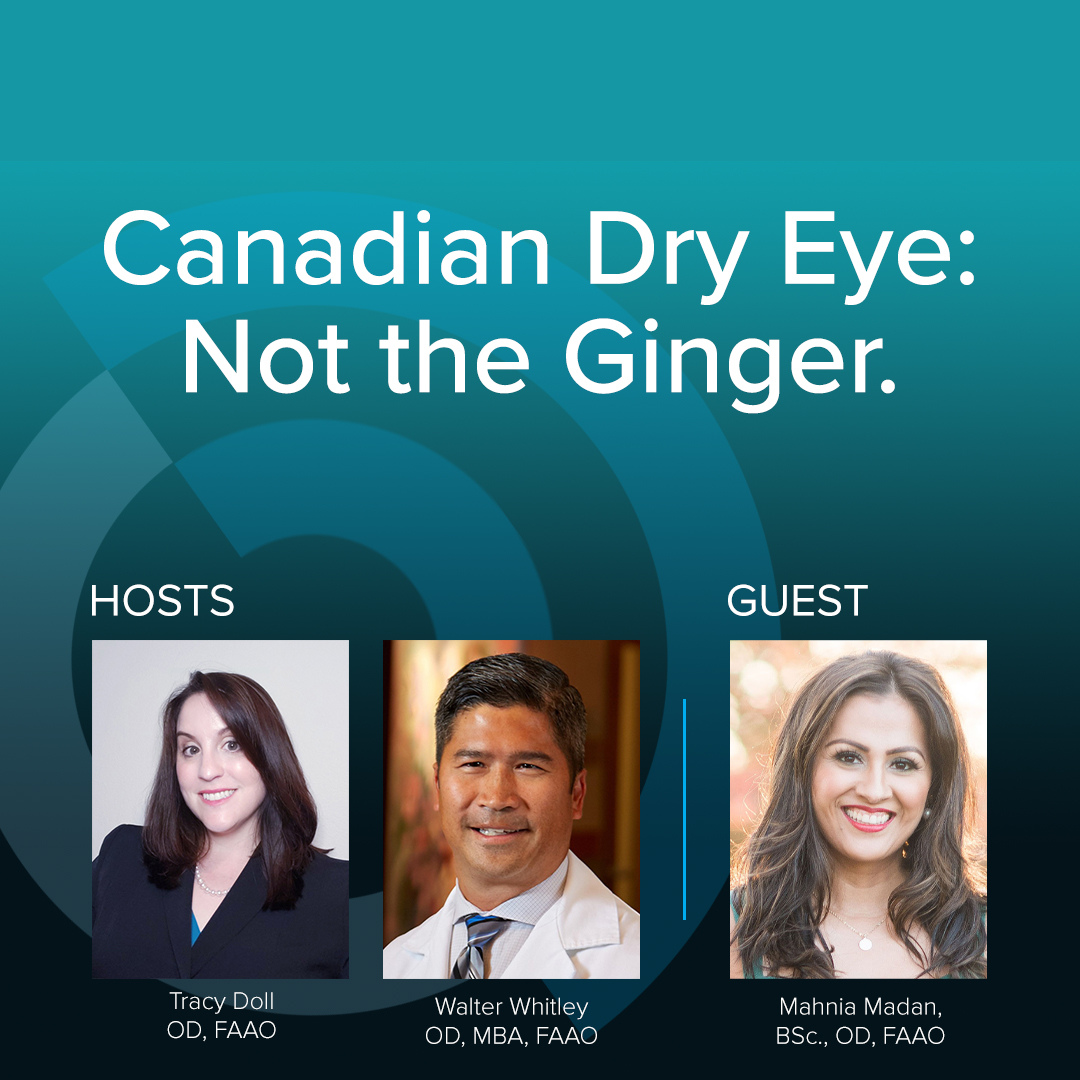Episode Transcript
[00:00:00] Speaker A: Welcome to the Dry Eye podcast series. Click on dry Eye, your insider paths to the most exclusive dry Eye topics. The series will raise awareness about the current and future state of ocular surface disease. The podcast will focus on a variety of topics. Before we get to our next episode, here's a quick word from our sponsor.
[00:00:21] Speaker B: This episode of Dry Eye Coach is sponsored by Tea Pharma, Inc. The makers of Ivisia and Iuza. For more information on Tea Pharma, Inc's portfolio, please visit teaharmainc.com. that's Thea pharmainc.com.
[00:00:39] Speaker A: Welcome to the podcast doctor Lisa Hornick and doctor Christina Lenski, who has some exciting news to share. They've just moved their practice right across the street.
[00:00:49] Speaker C: Yeah, we did. Yeah. We went from a 1400 square foot office to around 3000 with a little bit more room to expand. When it's time.
[00:01:02] Speaker A: We want to know more about your practice.
Is it primary care?
[00:01:06] Speaker C: It is, yeah. So we have a primary care setting. We see routine eye exams, diabetic eye exams, general ocular health, and then we have a growing dry eye clinic as well. We also fit specialty lenses and do some myopia management as well.
We are from Stanford Ranch optometry in Rockland, California.
[00:01:31] Speaker D: Okay. Awesome. Is it just you two or how big is your practice.
[00:01:36] Speaker C: Lisa?
[00:01:38] Speaker E: Well, I was just going to mention that we have a dry ice suite now, which is really exciting. It's such a beautiful space. So all our fancy in office procedures are going to be in their own separate fancy spa like room. We're very excited about that.
[00:01:52] Speaker D: Yeah, well, keep with that excitement. Tell us more. We got a bunch of questions, but we can get to those later. Tell us more. Why the sweet why? And so what's in there?
[00:02:02] Speaker C: Well, currently we have our optilite and we have low level light therapy, and we're going to be bringing in radio frequency and hopefully PRP in the near future as well. Yeah, it's just a nice space to have a customized treatment, individualized treatment for our patients in a more comfortable settings. So we can have everything we need in one space to provide the best care for our dry patients.
[00:02:27] Speaker D: So is there a back massager on the chair?
[00:02:30] Speaker C: No, but we are getting some blanket warmers so that people can lay down and just get really comfortable during their treatment.
[00:02:38] Speaker D: Tracy, do you have back massages on your chairs?
[00:02:41] Speaker A: I don't have back massagers, but the therapies that we do, particularly radiofrequency, does feel like a very nice face massage. So. And I do heated blankets. Yes. But no, I will not. I will not give up. I do not give shoulder massages. Only here.
[00:02:57] Speaker D: I'm just digressing. We tried that before, but then it was like, so there was just too much going on for the patient. It didn't really work out for our patients. But anyways, let's get back to this video podcast. Well, I know Lisa. I know Tracy. You both were at the academy, and you just did a lecture. Can you tell us more about the lecture?
[00:03:18] Speaker E: Yeah, the lecture was so fun. It was a rapid fire, and it was Tracy, myself, Pam, and Mila, and we just had so much fun. We decided that we wanted to do an update for dry eye because this year in particular has been really exciting with so many new innovations in dry eye disease. And Tracy actually had the awesome and very creative idea to do a weather theme. So each of our slides had a weather theme, each of our treatment had its own weather theme, and we even dressed up in different kind of costumes as seasons. So we had a lot of fun with that. And I think that the audience really enjoyed it.
[00:03:54] Speaker D: That is creative. I mean, as creative, we get mustaches with me and my buddies. But anyways, so what were some of the hot topics at the meeting, whether it was your lecture or some of the other lectures you went to in regards to dry eye ocular surface?
[00:04:10] Speaker E: So Melissa Barnett and I did a dry eye jeopardy. That was actually really fun. So in full game show mode, just like the real game, we had different categories. We had five different categories. We had dry eye diagnosis at home therapies, in office therapies, therapeutic contact lenses and pharmaceuticals that are either new or in the pipeline. And we actually had different levels. So, you know, when we teach our dry eye, whether it's students or other doctors, you know, sometimes it's hard to gauge what their level of knowledge is. So we decided to do easy, you know, level, and then we did medium, and then we did a hard level on the bottom. So I was really proud of our group. There was only a couple questions that stumped everybody. But most people got, you know, the majority of the questions right. And then, of course, the more difficult the question, the more points they got. And there were prizes at the end, so that one was a lot of fun. Yeah, we'll definitely be doing that one again in the future, I think, because it was just a really good time.
[00:05:10] Speaker D: That's always fun.
[00:05:11] Speaker A: I don't know what the question was that stumped everybody.
[00:05:13] Speaker E: We want to know it's a secret because we're going to do it again.
[00:05:20] Speaker D: You could have just put us on the spot right there, but it's okay. I'd rather not.
Tracy, what were some of the hot topics? Because you were there at the academy as well.
[00:05:28] Speaker A: Okay.
The hot topics are basically right before the meeting, we just had two pharmaceuticals that were released to market right back to back. So we have Meibo, that's perfluorohexyloctane. And that was just the first drop that's come out for our FDA that targets evaporative dryness and a tear supplement that's different than an artificial tear. It's targeting for evaporative dry eye.
The other new one was Exdemvi, which is targeting trying to get rid of excessive demodex mites. Having these two new pharmaceuticals just come out was a really hot topic. Then everyone's also super interested in the new wave of biological materials, mostly platelet rich plasma. So that came up again and again. We saw that as a really interesting topic. So I think those are the main three hot things that I saw at the academy.
Anything else to add?
[00:06:31] Speaker E: Go ahead, Walt. Sorry about that.
[00:06:33] Speaker D: Oh, no, go ahead.
[00:06:34] Speaker E: I was going to say I thought it was really interesting. There were quite a few lectures on lifestyle and how lifestyle can affect your eye disease. So there was a lecture about sleep. There was a couple lectures, I believe, about nutrition. So I really like that. That's kind of the way, you know, the direction that medicine is going is making sure we do talk about lifestyle and lifestyle modifications to our patients and how that can affect ocular surface disease.
[00:06:59] Speaker D: Hey, Christina, what are some of the hot topics that you're thinking of in regards to ocular surface, because you were at the practice moving. So I was.
[00:07:08] Speaker C: I was getting some. Some experience with prescribing meibo and x stemvi, which. Which is super exciting. I've had some positive feedback from patients with my bow. I've already had two refills, which was exciting to see. So those. I'm really excited to see how those two drugs perform and help our patients.
And definitely ERP. And again, same thing. Nutrition, lifestyle, all of those things are so important. And talking to our patients about those topics is important. We need to take a holistic approach to their healthcare and their dry eye management.
[00:07:41] Speaker D: Yeah. One of the hot topics, some of the data that I presented was in regards to perfluorobutylpentane cyclosporine, 0.1% and twice a day.
It's a molecule itself, but it's a soluble molecule that helps the cyclosporine penetrate it was able twice a day to help with both the symptoms and the signs of dry eye. There'll be a lot more on that as well.
Tell us more. You all love dry eye. You have a passion for dry eye. Tell us about this book.
Is there a book I'm hearing about? Who wants to go? Christina, tell us about the book.
[00:08:20] Speaker C: Well, there's a couple books. Are we talking about the IPL book or the drag?
Let's start with the IPL book. So, we have been talking to doctors for years now about optilite and IPL, and Lisa and I always talk about how there is so much to learn, and there's so many people out there that don't even know what it is or what it does or how it works, or is it a light, is it a laser? And so we really felt that if we're introducing this, if this wonderful device is being introduced into eye care, then maybe we need a manual to reference. Where is this? You know, how is this technology discovered? What other uses are there? Is it safe? What. What does it mean for someone to be FDA approved and non FDA approved? So we just really felt that giving this to our, you know, peers would be really valuable if they were interested in providing it in their practice.
[00:09:18] Speaker A: That's just. That's an amazing resource. I'm so glad that you did that. I mean, there's so many questions all the time about what protocol to use, how to get started. So I think having a book as a reference point is a really good place to start. So, well done, you two. Thank you.
There's another book. What's the other book? Tell us about the other book.
[00:09:36] Speaker D: Can you tell us about it or. Not yet?
[00:09:39] Speaker E: Yeah, we can give you some hints about it. Sure. So we, you know, we talked about IPL and the fact that we need a lot more education about IPL, but then we realized that there's a couple books out there on dry eye, but we wanted something as the most comprehensive as possible that covered every aspect of dry eye, because we know, we're all dry eye disease experts. We know that it's really complicated, it's multifactorial. What might work for one of our patients doesn't always translate to another patient. And so we want. Wanted something that was as up to date as possible, and that people who mostly geared towards practitioners who are getting into the dry ice space, and they just really want to learn as much as possible, because it can be a little bit confusing when you first get into it. And so we're actually. We knew we couldn't do it alone, so we enlisted the help of about 30, and Walt is one of them. He's one of our co authors. And so we have about 30 co authors who are all experts in dry eye disease, but not only that, they're experts in one specific facet of dry eye disease. And so it's going to be phenomenal. It's already off. Most of our subchapters are off to the publisher, and the publisher is editing them right now. And so we're really hoping to have this available to people in the beginning of 2024. It's going to be really exciting, definitely.
[00:10:58] Speaker D: And I was excited to be a contributor to that as well. So thanks for the opportunity. So, going back to the book that's available, how do people get it?
[00:11:06] Speaker C: That's a great question. So we are in the process of. So we handed out over 100 copies at Vision Expo west, and we are in the process of hopefully, publishing more and trying to figure out how to distribute them. Are we going to hand them out to optilite? Anyone interested in optilite, are we going to hand them out at expos? Are we going to. If anybody wants one, can they just email us and get one? So we're still working on that with Luminesce to figure out how we can distribute this to anyone who wants one. And I believe that we're going to try to do an e version as well.
[00:11:42] Speaker E: Yeah, yeah.
[00:11:43] Speaker D: So, just curious, is it specific to optilite? Because there's a lot of different ipls out there. Is there information that non optilite people. I'm sure there is lots of information, because everyone has to.
[00:11:56] Speaker E: Who's a good candidate for IPL, how to implement IPL, flow into your practice, that kind of thing. But it is. The specific protocols are geared mainly towards optilite.
Yeah.
[00:12:09] Speaker A: So how did you do, you both have backgrounds in writing. How did you decide that you wanted to write a book, other than it's just another way to educate people? What's your background in writing? How did you do this?
[00:12:24] Speaker C: Zero background in frame.
[00:12:27] Speaker E: Neither of us have a background truly in writing. I mean, other than, of course, you know, our academic studies and things like that. But I. It just started out, it was something that I was interested in. A good friend of mine, Aaron Leck, he wrote an article actually, for modern optometry. And so I said, you know what? I love that article. I love modern optometry. I love that publication. How did you get started? And so he actually introduced me to Karen Roman, the editor in chief for modern optometry. And then I said, I was talking to her, and I said, hey, I'd love to do an article for you about IPL. I think this was around 2019, Christina, right? When we.
[00:13:03] Speaker C: Yeah, I think so.
[00:13:04] Speaker E: If she wanted to write an article with me. And then it just kind of, you know, we just. We really enjoyed it. We kept doing it. We kept writing articles for our various optometry publications. Then we said, hey, we should, you know, do this manual for IPL. And we were successful at that. And then we thought, you know, hey, now we have a publisher. We had a friend who gave us the name of a publisher. It's Dugmar Publishing. They're up in, out of Canada, but they said, you should use this as a resource and they're going to help you. So it was a real. It was a learning process along the way, for sure. But it's just something that we really enjoy. We have a great time doing it, and we love putting, you know, more education out there. We love education and educating our peers. So it's just a really fun way to do that.
[00:13:49] Speaker C: I think the appetite is out there as well for books. I know. Maybe it's because we're old. I don't know. I like having a book to hold and flipping through the pages, looking something up online. You don't really know where all the sources are coming from, and so just having something to hold for me, I find that really valuable. And I think that a lot of our peers do as well.
[00:14:12] Speaker D: Yeah, I like books, too, to hold them. I don't like to swipe and go anyways.
[00:14:18] Speaker E: It dries our eyes out more. Right.
[00:14:21] Speaker D: We're just staring more seven times per minute or whatever it may be.
[00:14:25] Speaker C: Yeah, we've been reading all these subchapters, and Lisa goes and she prints us both copies instead of reading them online, because I just can't. I can't sit there and, like, read. My eyes get tired. I'm like, I need it on paper. So. So we think a lot of us do, right? We all want to hold a book and flip through the pages, but we.
[00:14:44] Speaker E: Appreciate the need for an electronic version as well, so. Absolutely. We're really trying to push for both. And our new book, the. The big dry eye book, will have electronic version as well. And so that way, you know, dry eye is always changing. It's constantly changing. There's new updates, new medications, new technologies. So that way we can always push out new additions on the electronic version.
[00:15:06] Speaker C: Can continue to evolve just the way that the treatment does for dry eye.
[00:15:10] Speaker E: Yeah.
[00:15:10] Speaker A: I also think that's great for students and, you know, younger OD's who, you know, may have never had a book before. That would be have an electronic resource. That's okay. Both ways are good to have, like, our patients who prefer to have texts versus phone calls. We need to have both those options.
[00:15:27] Speaker E: Right.
[00:15:29] Speaker D: That's awesome. About the book that you both, that you both wrote, the one that's available and the one that's soon to be coming out. I want to go back to one of the things you opened up with when we're talking about your dry eye suite or your specialty room. So you mentioned you have IPL and low level light therapy, because that's something that comes up a lot. You know, whenever any of us are doing the lectures, people want to know, well, when do you use this? When do you do this? How does this complement each other? We don't have much time to go into it, but any quick pearls that you can offer our viewers, I'll go with Christina first.
[00:16:05] Speaker C: So I. Excuse me. I'd like to offer them together. I think that they work really well. Do the IPL, get rid of the inflammation, and then use the low level light therapy after. I actually use the low level light therapy prior to expression, I feel like it just does a really nice job at kind of warming up those glands and making the expression really easy.
[00:16:26] Speaker D: Lisa?
[00:16:27] Speaker E: Yeah, I agree. I do the same exact thing that Christina does.
IPL is our number one. That's really our workhorse. Right. We always talk about how do we even practice dry eye without our IPL? And then low level light therapy is just the cherry on top. So, yeah, if they can't do both, let's say if they are pressed for time and they need to leave, we'll just do IPL. But if they have a couple more minutes and we can do the red light therapy, we'll do that after the IPL and then express.
[00:16:55] Speaker D: All right, and you both mentioned Meibo, so where does that fit in with your treatments, and what are your thoughts there? Because that's the other question that comes.
[00:17:01] Speaker E: Up to all of us, I think.
[00:17:06] Speaker C: Yeah, I think it's just an additional tool. It's going to help. I think if we can get rid of inflammation and then we can help seal in and prevent evaporation, I feel like it's just going to add to patient comfort.
[00:17:19] Speaker E: Yeah. Keep that patient feeling good, looking good, and feeling good.
[00:17:26] Speaker D: Well, any additional pearls that you have for our viewers in regards to either starting a dry eye sweet. You know, writing a book that you want to share.
[00:17:35] Speaker C: Well, I don't think you have to have like a whole dry eye suite to practice dry eye and to help patients. You really, you know, your exam room, you don't need a lot of fancy equipment to get started. You just need really good case history. Talk to your patients and do a really good examination of their lids, lashes and everything else. Don't skip the lids and lashes. Right. Don't pass through them to get to the cornea and conjunctiva. So good case history and a really good slit lamp exam with some staining is going to give us a lot of information and help the provider give really good care to their patient.
[00:18:08] Speaker E: Yeah. And if there's providers starting out wanting to get into the dry ice space, don't feel, you know, like you can, you're doing it alone. You can always reach out to your peers, your mentors to get more information. So I think that's something that I didn't do in the beginning of my career. I felt like, oh, I'm just going to figure it out myself. And it's a lot slower process that way. So don't be afraid to reach out to your peers. We're always happy to help. And if you ever have any questions, Christina and I would love to help you out. Just like Tracy and Walt, you guys have been amazing and have this incredible podcast, and I'm sure that's very helpful to your viewers and listeners.
[00:18:46] Speaker D: Well, we want to thank you both for being on here and sharing your clinical pearls and sharing about your experiences and your passion for dry eye and ocular surface disease. We want to thank you viewers for staying tuned to our podcast. Thank you.
[00:19:01] Speaker A: Thanks for listening. Join us for our next episode soon. Find us online at www.dryeyecoach.com and all major podcast platforms.
